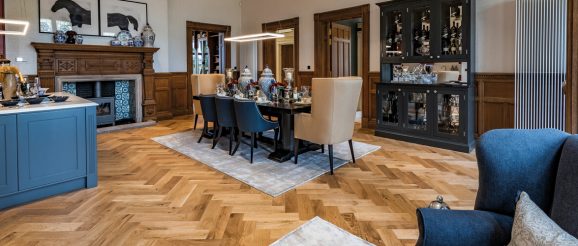Understanding Innovation, Creativity & Sustainability In Design | Ted Todd Fine Wood Floors

We sat down with Bharat Chaudhary, Product Designer here at Ted Todd, to find out how he finds inspiration when designing new products, what sustainability means to him, and how he ensures it is built into all our products.
After graduating from the College of Architecture in New Delhi and working as an architect in both India and Germany, Bharat attended Central Saint Martins to study Product Design. He then went on to work as a Product Designer in both New Delhi and London, before joining our team in 2020.
This cross-cultural work experience and multi-disciplinary design experience in both Architecture and Product Design means that Bharat has a superb eye for detail, and a strong belief that the consumer should sit at the heart of any design process.
When you begin developing a new product, what considerations do you make?
I always begin with the human-centred approach to design, with an emphasis on consumer needs. Consumers are after all those who will live with our floors and so the design process must be centred around them. I do in-depth market research to identify consumer and industry trends and analyse them to see whether a trend looks like it has staying power.
Other things I keep in mind are what resources are available for innovation, how can we create this product with sustainability in mind, and how is it unique to us?
How do you balance longevity with trends to make sure a product won’t go out of style?
At Ted Todd our product design revolves around the ethos that our floors must last a lifetime. Most of our products are designed outside the realm of transient trends, but when we do design a product to fit a trend, it must be based around a trend that will last for years, rather than a fleeting trend that will only last for a season.
To ensure this, the research we do is of utmost importance. It will be informed by quantifiable and professional trend forecasts and reports. The design process will then be quite exploratory.
Can you take us through how and when sustainability criteria come into play in the development process?
Sustainability comes into play from the very beginning of the design and development process at Ted Todd, as it is an integral part of our company ethics. Environmental accreditations such as FSC and PEFC are hugely important, on top of the usual UK Timber Regulations.
Every stage from design to delivery has sustainability as a priority. Any raw materials used must strictly adhere to FSC guidelines, ensuring that any suppliers have clear chain of custody procedures. We are also making huge strides in reducing our carbon footprint by making careful considerations in our production techniques and how and where we source materials.
Using reclaimed materials is one of the very best ways of ensuring sustainable design, as it means that we are using timber that has already been felled and are extending the life of that timber, keeping carbon locked away for longer.
On an individual level, I make sure that whatever I design does not contradict the sustainability model of the company or my own ethics as a responsible designer. Therefore, I design products that respond to user and consumer needs whilst working within a strict sustainable framework.
I believe that as a responsible designer in today’s world, sustainability must be an integral part of the design process – products should not only be environmentally friendly but human friendly too.
We’ve heard the phrase ‘sustainability is the new luxury’ recently, what does this statement mean to you?
I find this statement quite ambiguous, actually! The statement makes it sound like sustainable products are only affordable by those at the luxury end of the market, which is absolutely false.
Not all sustainable products are recognised as a luxury, and not all luxury products are certified as sustainable.
It is also quite contradictory that local artisans are paid less for their handmade goods than factory produced luxury goods. This is quite ironic as artisans often use vernacular material to produce their pieces, which is much more sustainable than say a fashion superbrand that has factories in 10 countries and are depleting all of those country’s natural and human resources, which is most definitely not sustainable in the long run.
If you think about reclaimed wood again as we mentioned earlier, it is equally authentic and unique as say a handcrafted clay vase made by a local artisan. Their journey to achieve an authentic aesthetic is more about time and hard work given by many levels of handwork and manual labour. This is what makes an authentic luxury, not a mass-produced commodity being recognised as luxury.
Given these points, I’m not sure whether sustainability is actually being treated like a luxury yet! On the other hand, luxury is gaining a lot from using sustainability – although this is sadly sometimes just a marketing narrative.
Lastly, what inspires you to be creative?
People and emotions are what really drive my creative passion, and empathy and kindness are the most important ethics for me as a person.
As a designer, I prioritise solving a problem that affects people and communities, and so try to combine my people skills with my creative capabilities to identify, refine, define and then design to deliver a project or product that makes a change and a difference in a person’s life.
